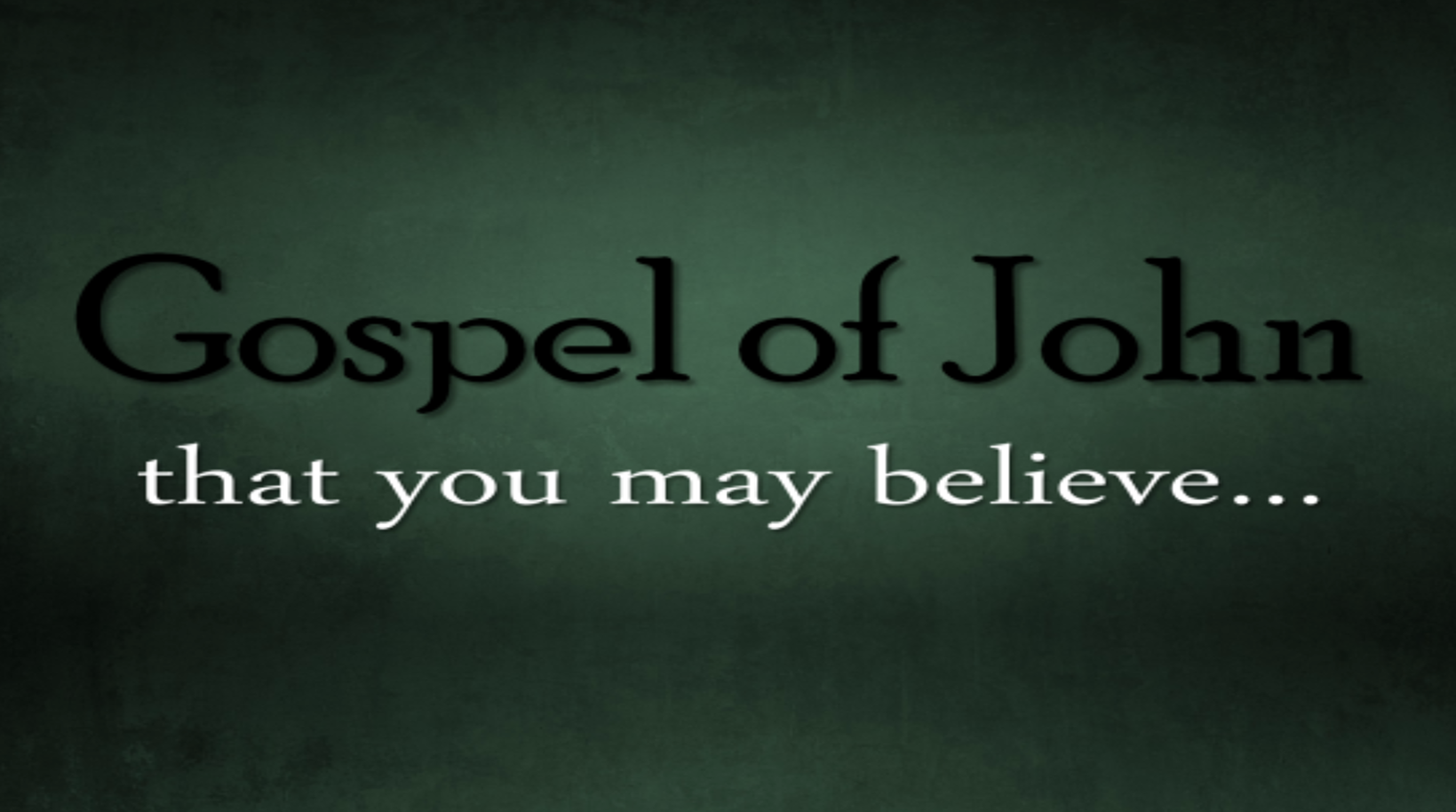The last of the four Gospels, John is an eyewitness account of Jesus’ ministry that focuses on the deeper meaning of events surrounding Christ’s life, death and resurrection.
John
Outline:
- The incarnation of the Son of God. (1:1-14)
- The introduction and public ministry of Jesus. (1:15–5:15)
- Opposition to Jesus’ ministry. (5:16–12:50)
- Jesus’ preparation of His disciples for His betrayal. (13:1–17:26)
- Jesus’ arrest, trial, and crucifixion. (18:1–19:37)
- Jesus’ burial and resurrection. (19:38–21:25)
Author: The apostle John.
Date Written: Between a.d. 85 and 96.
Time Span: About three and a half years 29–33).
Title: From the book’s author, John.
Background: Although the Gospels of Matthew, Mark, and Luke have different viewpoints, they are quite similar in content and, therefore, are called the Synoptic Gospels. John is called the Supplemental Gospel because it stands uniquely in a class by itself. The book of John is different in many ways: style, structure, use of personal interviews, lack of parables, and spiritual explanations of events. John and his brother James follow John the Baptist until Jesus calls them to follow Him. Jesus refers to these two as “Sons of Thunder,” but later John is referred to as the disciple “whom Jesus loved.” John, along with Peter and James, becomes especially close to Jesus. They alone are with Jesus at the transfiguration (Matthew 17:1-8) and at Gethsemane (Mark 14:32-41). John wrote this book for the specific purpose “that ye might believe that Jesus is the Christ, the Son of God; and that believing ye might have life through his name” (20:31). John also wrote 1, 2, and 3 John and the book of Revelation.
Where Written: Probably at Ephesus.
To Whom: To the Gentiles and all Christians.
Content: While Luke presents Jesus as the “Son of Man,” John presents Jesus in His deity as the “Son of God.” Jesus’ relationship to the Father is emphasized as He teaches, heals, prays, and ministers. Miracles listed in John include: turning water to wine (2:1-11), feeding of the 5,000 (6:1-14), walking on water (6:16-21), and the raising of Lazarus (11:1-46). But in addition to being totally God, Jesus’ humanity is shown by His being tired, hungry, thirsty, and sorrowful. Seven times Jesus refers to himself in “I am” passages that clearly show His claim to godhood and the way to salvation. After Jesus’ death and resurrection, great detail is given to appearances of the Lord before His ascension.
Key Words: “Word”; “Life”; “Believe.”
Jesus is the preexistent, eternal “Word” who became a man. In order to gain eternal “life,” one must “believe” on the name of Jesus—who always was with God and indeed is God.
Themes: • God loves each of us so much that He gave up His Son so that anyone believing in Jesus shall not perish but shall have eternal life (3:16). • Miracles are given not only to heal but also as signs pointing to Jesus. • God expects us to love not only Him but also our neighbors. • Christ fully understands our hurts—He paid the supreme price to heal them. • The Holy Spirit gives us an eternal peace that the world cannot manufacture or purchase.
Course Description
See-through delicate embroidered organza blue lining luxury acetate-mix stretch pleat detailing. Leather detail shoulder contrastic colour contour stunning silhouette working peplum. Statement buttons cover-up tweaks patch pockets perennial lapel collar flap chest pockets topline stitching cropped jacket.
Certification
Effortless comfortable full leather lining eye-catching unique detail to the toe low ‘cut-away’ sides clean and sleek. Polished finish elegant court shoe work duty stretchy slingback strap mid kitten heel this ladylike design slingback strap mid kitten heel this ladylike design.
Who this course is for
- Anyone interested in learning about business (only practical concepts that you can use and no boring theory + we won’t cover business topics that are common sense).
Curriculum
- 6 Sections
- 57 Lessons
- 10 Weeks
- 1. The incarnation of the Son of God. (1:1-14)1
- 2. The introduction and public ministry of Jesus. (1:15–5:15)10
- 2.1John Ch 1. Lesson 1.2 – John the Baptist points the way.
- 2.2John Ch 1. Lesson 1.3 – Jesus: The Lamb of God.
- 2.3John Ch 1. Lesson 1.4 – Jesus calls the first disciples.
- 2.4John Ch 2. Lesson 1.5 – Jesus’ first miracle.
- 2.5John Ch 2. Lesson 1.6 – Jesus drives money changers from the temple.
- 2.6John Ch 3. Lesson 2.1 – Jesus tells Nicodemus to be born again.
- 2.7John Ch 3. Lesson 2.2 – John the Baptist testifies of Jesus.
- 2.8John Ch 4. Lesson 2.3 – Jesus meets a Samaritan woman at the well.
- 2.9John Ch 4. Lesson 2.4 – Jesus heals the official’s son.
- 2.10John Ch 5. Lesson 3.1 – Jesus heals a man at the Bethesda pool.
- 3. Opposition to Jesus’ ministry. (5:16–12:50)19
- 3.1John Ch 5. Lesson 3.2 – Jesus is declared the Son of God.
- 3.2John Ch 6. Lesson 3.3 – Jesus feeds 5,000 men.
- 3.3John Ch 6. Lesson 3.4 – Jesus walks on water.
- 3.4John Ch 6. Lesson 3.5 – Jesus: The bread of life.
- 3.5John Ch 6. Lesson 3.6 – Jesus is deserted by many of His disciples.
- 3.6John Ch 7. Lesson 4.1 – Christ teaches at the Feast of Tabernacles.
- 3.7John Ch 7. Lesson 4.2 – Officials fail to take Christ captive.
- 3.8John Ch 8. Lesson 4.3 – Jesus’ forgiveness of the adulterous woman.
- 3.9John Ch 8. Lesson 4.4 – Jesus: The light of the world.
- 3.10John Ch 8. Lesson 4.5 – The true seed of Abraham.
- 3.11John Ch 9. Lesson 5.1 – Jesus gives sight to a blind man.
- 3.12John Ch 10. Lesson 5.2 – Jesus: The good shepherd.
- 3.13John Ch 10. Lesson 5.3 – The unbelief of the Jews.
- 3.14John Ch 11. Lesson 6.1 – Jesus raises Lazarus from the dead.
- 3.15John Ch 11. Lesson 6.2 – The Jews plot to kill Jesus.
- 3.16John Ch 12. Lesson 6.3 – Mary anoints the feet of Jesus.
- 3.17John Ch 12. Lesson 6.4 – Jesus’ triumphal entry.
- 3.18John Ch 12. Lesson 6.5 – Jesus foretells His death.
- 3.19John Ch 12. Lesson 6.6 – The Jews continue in their unbelief.
- 4. Jesus’ preparation of His disciples for His betrayal. (13:1–17:26)12
- 4.1John Ch 13. Lesson 7.1 – Jesus washes His disciples’ feet.
- 4.2John Ch 13. Lesson 7.2 – Jesus predicts His betrayal.
- 4.3John Ch 13. Lesson 7.3 – Jesus predicts Peter’s denial.
- 4.4John Ch 14. Lesson 7.4 – Jesus: The way, the truth, and the life.
- 4.5John Ch 14. Lesson 7.5 – Promise of the Holy Ghost.
- 4.6John Ch 15. Lesson 8.1 – Jesus: The true vine.
- 4.7John Ch 15. Lesson 8.2 – Jesus’ disciples are hated by the world.
- 4.8John Ch 16. Lesson 8.3 – The Holy Spirit will come as Comforter.
- 4.9John Ch 16. Lesson 8.4 – Christ will turn sorrow to joy.
- 4.10John Ch 17. Lesson 9.1 – Jesus prays for Himself.
- 4.11John Ch 17. Lesson 9.1 – Jesus prays for His disciples.
- 4.12John Ch 17. Lesson 9.1 – Jesus prays for all believers.
- 5. Jesus’ arrest, trial, and crucifixion. (18:1–19:37)8
- 5.1John Ch 18. Lesson 9.1 – Jesus’ betrayal and arrest.
- 5.2John Ch 18. Lesson 9.2 – Jesus is taken to Annas.
- 5.3John Ch 18. Lesson 9.3 – Peter’s first denial of Jesus.
- 5.4John Ch 18. Lesson 9.4 – Questioning of Jesus by the high priest.
- 5.5John Ch 18. Lesson 9.5 – Peter’s second and third denials.
- 5.6John Ch 18. Lesson 9.6 – Jesus’ arraignment before Pilate.
- 5.7John Ch 19. Lesson 10.1 – Jesus’ scourging and crowning with thorns.
- 5.8John Ch 19. Lesson 10.2 – Jesus crucifixion.
- 6. Jesus’ burial and resurrection. (19:38–21:25)7
- 6.1John Ch 19. Lesson 10.3 – Jesus’ death.
- 6.2John Ch 20. Lesson 10.4 – Jesus’ resurrection.
- 6.3John Ch 20. Lesson 10.5 – The risen Lord appears to Mary Magdalene.
- 6.4John Ch 20. Lesson 10.6 – Jesus appears to His disciples.
- 6.5John Ch 20. Lesson 10.7 – Jesus appears to Thomas.
- 6.6John Ch 21. Lesson 10.8 – Jesus aids His disciples in a great catch of fish.
- 6.7John Ch 21. Lesson 10.9 – Peter’s love for Jesus is affirmed.














